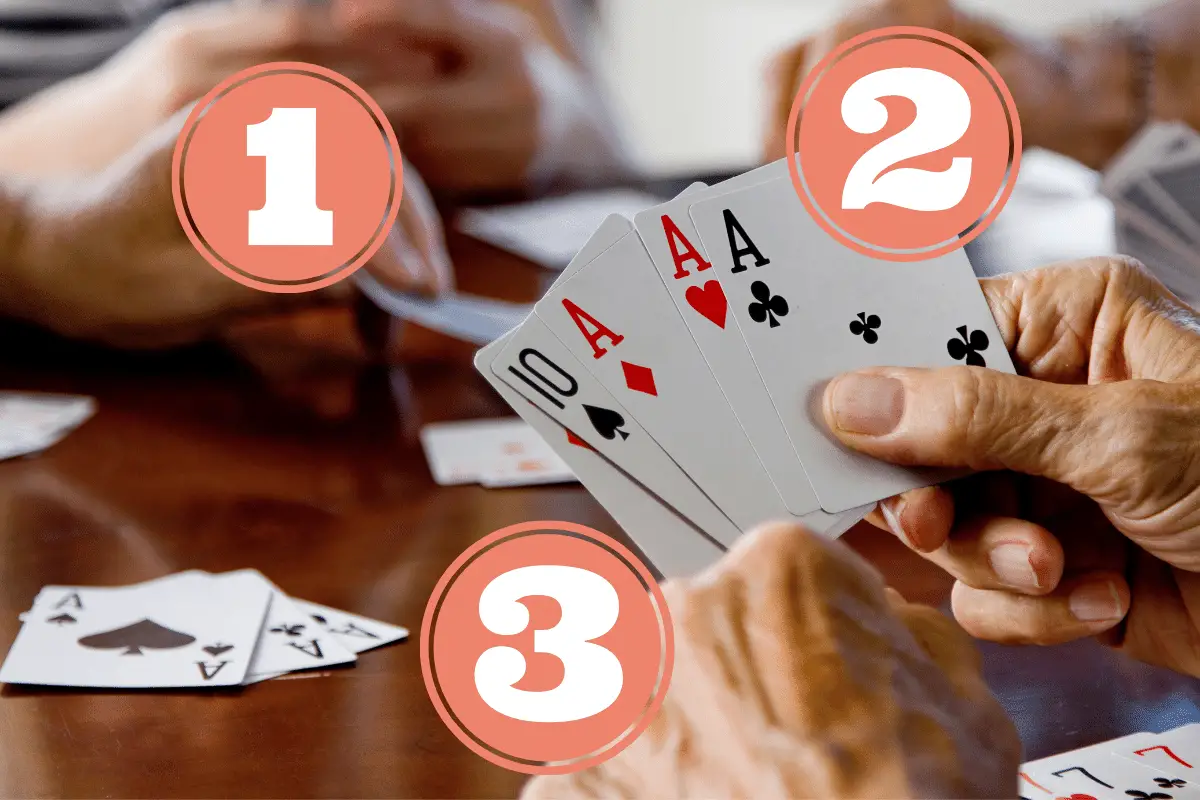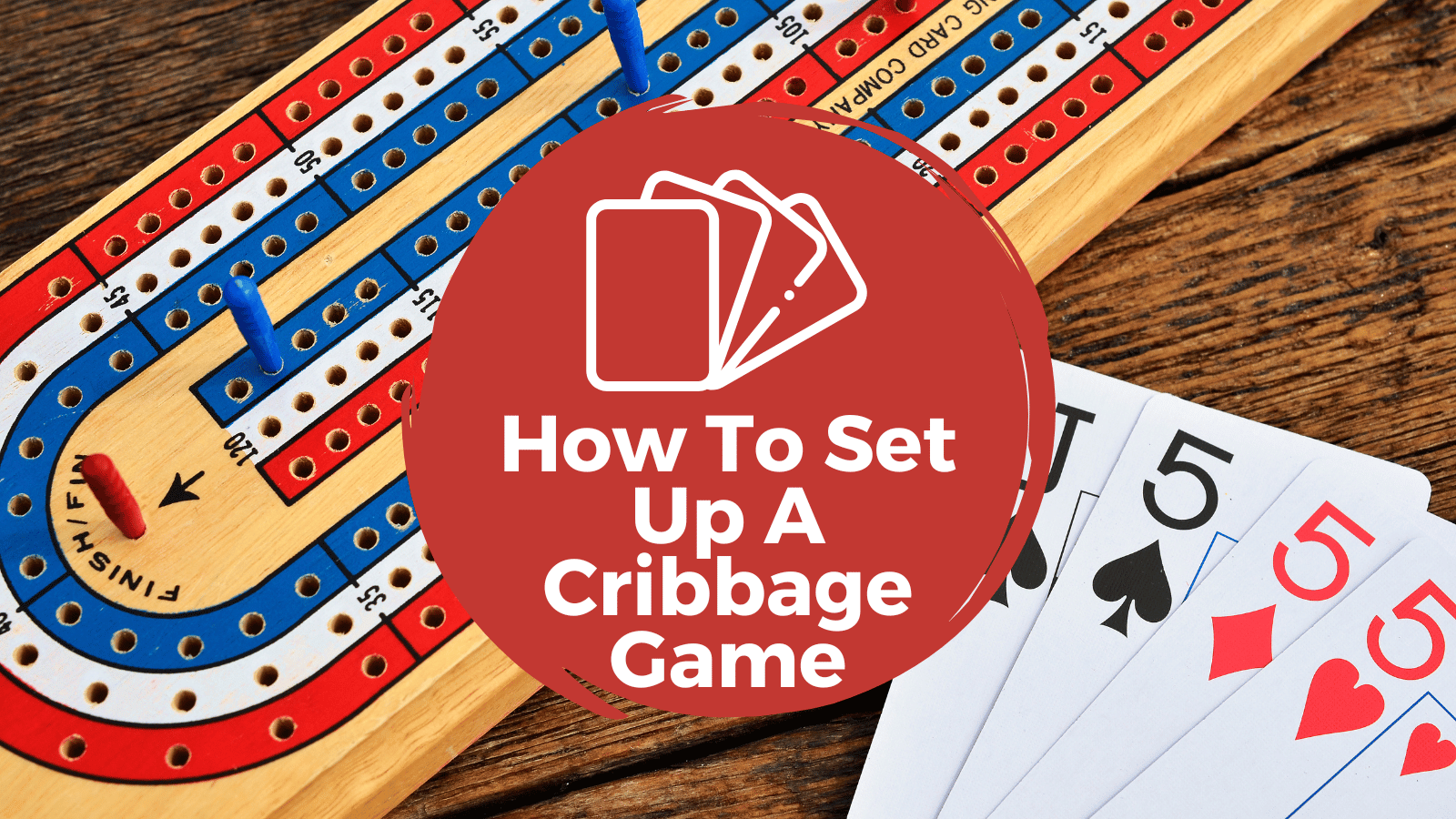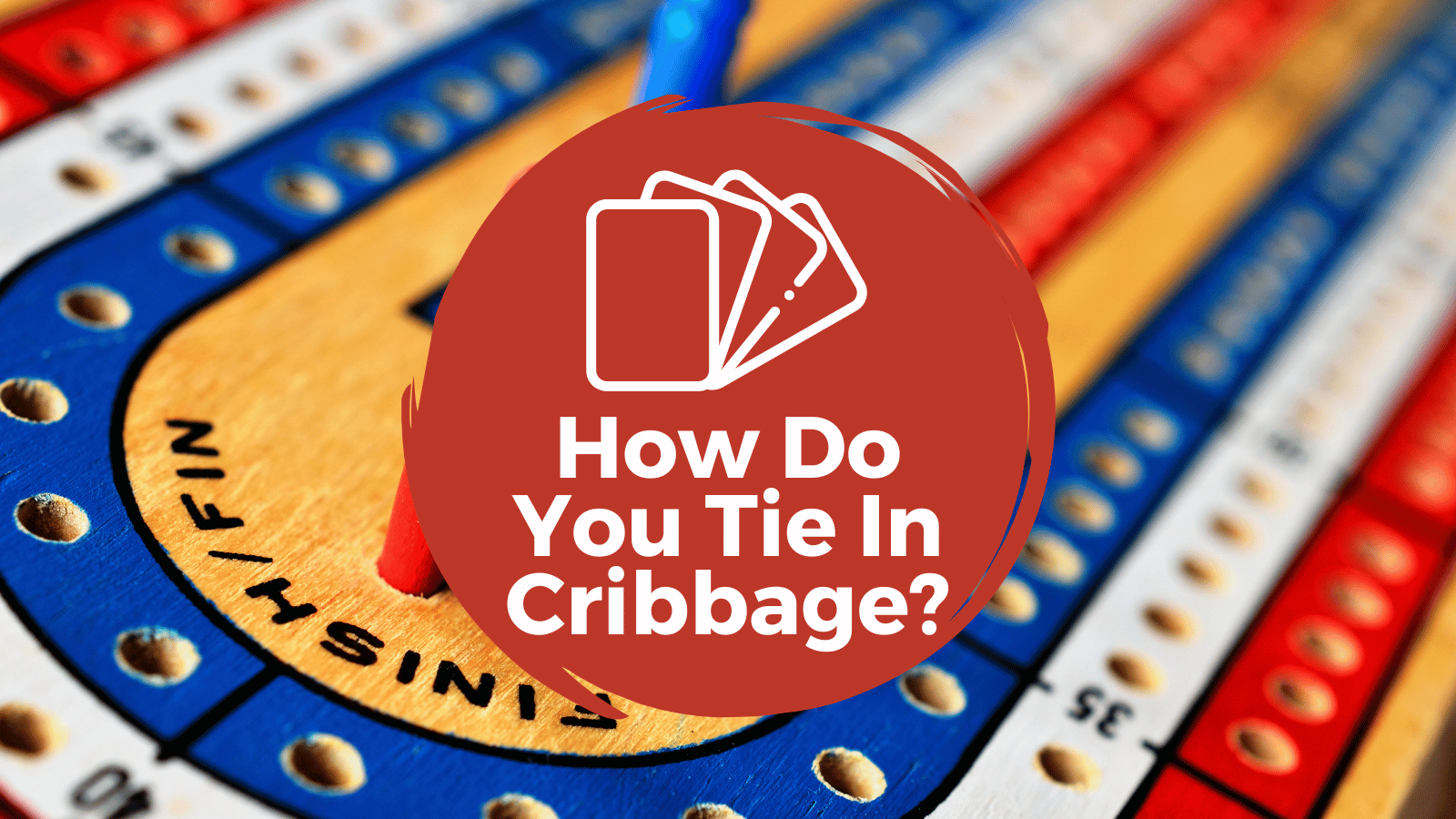Cribbage is known as a two-player game first and foremost, but there are other ways to play too!
3 player Cribbage is fun, too, though it requires a few adjustments to the standard rules.
I wanted to help clear this up for you and get you back to playing cards with friends right now, so I wrote this guide to the 3 person Cribbage rules.
Need a Cribbage board to get started?
Check out this classic one here!
Table of Contents
Major Difference In A Nutshell: 3-Person Cribbage
Compared to the standard six-card, two-player Cribbage, here are the main rule differences:
- The Pones get 5 cards on the deal and must discard one to the dealer’s crib. The dealer still gets six and must discard two.
- The player to the right of the dealer cuts the deck after everyone discards.
- The player to the left of the dealer starts The Play or Pegging.
- The player to the left of the dealer starts counting during The Show.
- Play passes to the player left of the dealer after the turn or round is over.
Outside of this, it’s pretty much the same. If you want more details on the whole game of cribbage, either head over to the article linked below OR keep reading for a brief rundown of the game.

Check out our comprehensive guide on the rules of cribbage and how to play with examples, scoring breakdowns, and vocabulary guide.
What Do You Need To Play 3-Person Cribbage?
- A deck of 52 cards
- A cribbage board
When picking a cribbage board, it’s easier to find one with three tracks for pegging.
If you don’t have one, that’s OK.
Just have two players start at the beginning, and the third player start at the end and work their way backward.
Read more about three-track cribbage boards and other questions in our article here.
Objective Of 3 Player Cribbage
The first player to move their peg 121 holes wins! It doesn’t matter where the other players are in the game.
As a shorter version, you only need to get to 61 points.
Phases Of The Game
Each phase of the game moves us along and allows us to score points in different ways.
It’s here that we see the minor differences between the standard two-player Cribbage and this variation.
Speaking of Cribbage variations, I have a massive list in the article at the link.
Starting The Game
Each player cuts the deck. The player with the lowest card (Aces are low) gets to be the first dealer.
Dealing The Cards
The dealer deals five cards to each player. Then, they give themself an extra sixth card.
The Discard Phase
The two Pones or non-dealers must discard one of their five cards into the dealer’s Crib. This will be a bonus hand for the dealer at the end of the turn.
The dealer has six cards; therefore, they must pick two cards to get rid of. These two cards go into their crib for use, with the other cards tossed by the Pones.
Once all four cards (one from each Pone and two from the Dealer) are tossed in the crib, the player to the right of the dealer cuts the deck.
The Dealer flips over the card and places it on top.
This is the cut card or Starter card. This will be used for counting in the last phase of the turn, called The Show.
Note: If a Jack is cut, the Dealer gets two points for “His Heels” and pegs them right away.

Are you looking for some new games to spice up your life without spending a ton of money?
Enter the One Deck, Endless Fun eBook.
It contains 15 of my favorite card games you can play with a single deck of cards and a brief description of how to play each one.
I also include a handy table, breaking down each game in terms of difficulty, number of players, and the time it takes to play.
The Play Or Pegging Phase
During the Play, each player takes turns laying a single card and adding the value of the cards together.
Remember, all 10s, Jacks, Queens, and Kings are worth ten in value.
If players pair, make runs, or get 15 exactly, they get points just like they normally would and peg them right away.
Play cannot go over 31 in counting. If no one can play, they say, “Go!” If all players Go, then the person who played the last card gets one point.
Play resumes with the player left of this last person.
If someone adds a card to make 31 exactly, they get two points.
Note: Flushes don’t work in this phase. Neither do Nobs. Runs don’t have to be in order, but you can’t have double runs.
When everyone runs out of cards, the last person to play gets one point for the last card.
Then, you move on to The Show.
The Show Or Counting Your Hands
The player to the left of the dealer starts by counting the number of points in their hand. They may use the cut card or starter card to help them.
If they miscount, it’s the other players’ job to correct them.
If you’re playing cutthroat or muggins, you may even get points for this.
Let’s say the player overcounts (they say they have 5 when they have 4). Both other players get one point extra as a penalty to the player who counted wrong.
Let’s say the player counted low (they have 5 but only say 4). The player who corrects them gets that extra point.
Once the first player counts and pegs, we move to the other Pone. They count and peg.
Now, the dealer counts and pegs their hand. Then, they count their crib as an extra hand.
The cards are given to the player left of the dealer who shuffles.
The round starts again with this new player becoming the dealer.
Repeat turns until someone gets to 121 points and wins the game!
Counting Cribbage Hands
This is a huge part of the game. I won’t go into huge detail here.
If you want a full guide, check out my Printable Cribbage Scoring Cheat Sheet.
Otherwise, he’s a *very* brief rundown of the points:
| Method | Points | Phase |
|---|---|---|
| Adding Value to 15 | 2 | Any |
| Pairs | 2 | Any |
| Runs (consecutive cards) | # of cards in run | Any |
| Flush (all four of the same suit) | 4 (5 if cut card fits and must be all 5 in crib) | The Show only |
| Nobs (Jack in hand matching suit of cut card) | 1 | The Show only |
| His Heels or Nibs (cutting a Jack) | 2 only for the dealer | Before The Play |
| Go and Last Card (Last one to play in pegging) | 1 | The Play |
| 31 (getting 31 exactly) | 2 | The Play |






